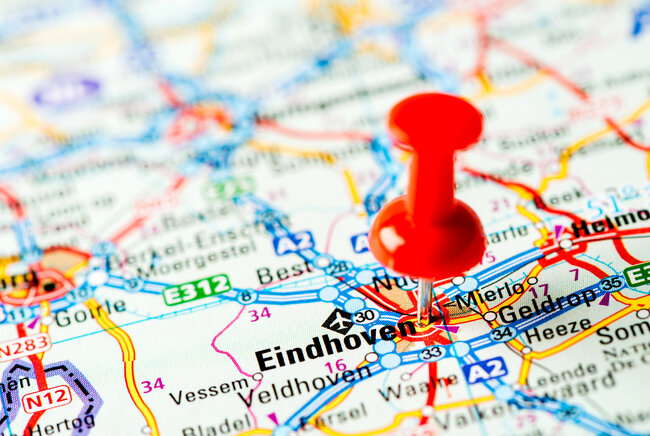Increasing awareness of urban cultural heritage using digital technologies
Benshuo Wang defended his PhD thesis at the department of Built Environment on November 30th.

Cultural heritage plays a vital role in inheriting, maintaining, and passing values and knowledge from one generation to the next. Usually, the public learn about cultural heritage artifacts via information channels like flyers and websites. In recent years, local governments and official authorities have been creating multi-media web platforms and smartphone apps to share their city’s cultural heritage to increase users’ knowledge and awareness of cultural heritage. But these platforms are designed without considering user preferences on the content, media type, and functionalities. For his PhD research, Benshuo Wang designed and tested a new multi-media web platform based on people’s preferences, and analyzed its effectiveness to increase awareness of cultural heritage.

As stated by UNESCO (UNESCO World Heritage Center, 2005), cultural heritage plays a vital role in inheriting, maintaining, and passing the values and knowledge from past generations to the next. Urban cultural heritage is the backbone of a city because it presents the historical value of a city and contributes significantly to its sustainable development.
However, over the years, many historical artifacts and their values have not been sufficiently protected due to lack of policies, wars, and a lack of information provision to society, among other reasons. For the sustainability of urban cultural heritage artifacts and their values, a major task is to increase people’s knowledge and awareness of urban cultural heritage by making it understandable and accessible to society.
A new multi-media web platform
Normally, the general public learn about cultural artifacts through traditional tourist information channels such as flyers and websites. Recently, web platforms and smartphone apps have been used to share the cultural heritage of various cities with the aim of increasing users’ knowledge and awareness of cultural heritage while offering them engaging experiences.
However, these platforms are designed and developed without considering user preferences on content, media type and functionalities. Moreover, it is not known to what extent these platforms fulfill their intended purposes. With this mind, Benshuo Wang and his collaborators at the department of Built Environment designed and tested a new multi-media web platform that incorporates people’s preferences. Thereafter, he analyzed its effectiveness in increasing awareness of cultural heritage.
Design and test experiments
To design and test a new dedicated multi-media web platform, Wang carried out a series of experiments. The first experiment consisted of a questionnaire and was designed to gather people’s preferences for different media and media combinations over a hypothetical multiple media web platform. The stated-choice experiment concluded that the potential users of a dedicated multi-media platform embraced advanced media on a web platform, such as the 3D models and Virtual Reality (VR), in addition to the traditional media such as text and photos. The questionnaire also showed that potential users would like to access information through multiple media, and that they prefer to use a 2D map as the entrance point to a web platform.
For the second experiment, a map-based platform using PHP programming language was developed based on the findings from the first experiment. The platform included both tangible and intangible cultural heritage information, and it contained both traditional and advanced media to broadcast information. The platform also added auxiliary functions such as “timeline” and “upload user experience” to increase interaction between users and the web platform. Strijp-S (the Philips old manufacturing campus which is located in Eindhoven, the Netherlands) was used as a case study area for the multi-media platform. This industrial heritage district changed its functions when the Philips moved its production facilities to other countries.
Assessing the new platform
To assess the effectiveness of the new multi-media web platform for Strijp-S, the relationships between the functionalities offered by a well-designed web-based multi-media platform and the increase of users’ experience and awareness of cultural heritage were first tested. This test took into account personal characteristics of users and using a structural equation model. Second, Wang looked at the effectiveness of the developed web-based multi-media platform in terms of the increase of users’ experience and awareness of cultural heritage by analyzing between users of the platform and a general purpose search engine (Google).
Important insights
The findings offer important insights and can be used as guidelines by governments, heritage institutions, and destination marketing organizations concerned with the sustainability of heritage by making it better accessible to the general public.
First, they need to update cultural heritage information continually: the more information people receive, the higher improvement in awareness will be reached. Second, they could use more advanced and vivid media such as VR and AR for more interaction with the users, which should result in more awareness. Third, basic and auxiliary functions of a multi-media platform can support different users groups (people with prior knowledge and people with less prior knowledge), and therefore enable access to a wider group of users.
Overall, Wang’s research provides a new understanding of how a multi-media platform can contribute to people’s awareness and experience of cultural heritage.
Title of PhD thesis: Increasing awareness of urban cultural heritage using digital technologies: empirical design and analysis of a new multi-media web platform. Supervisors: Theo A. Arentze and Gamze Z. Dane.
Media contact
Latest news


